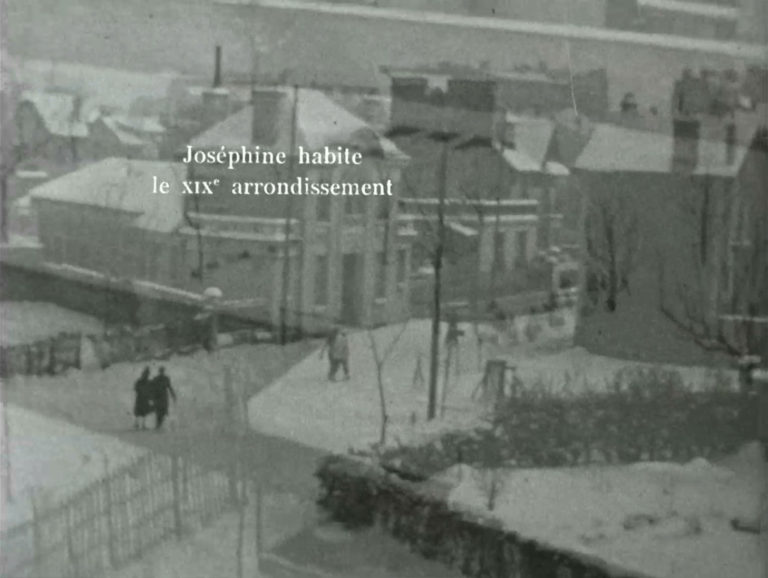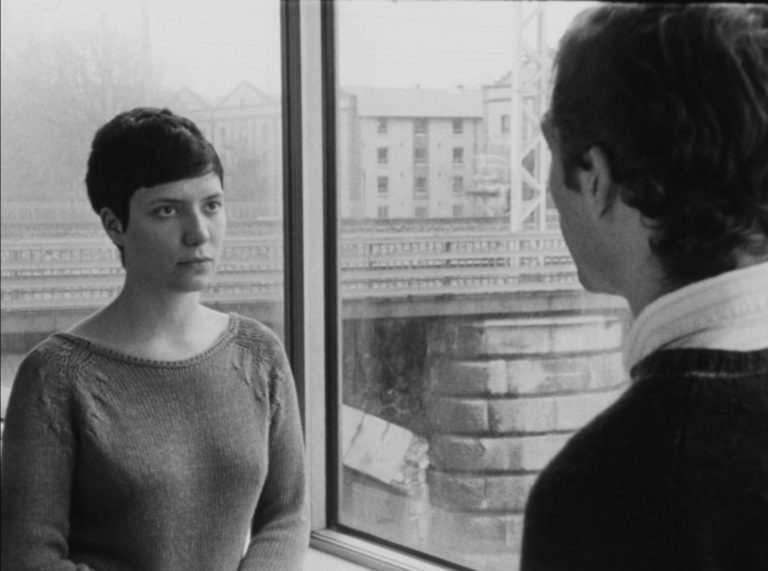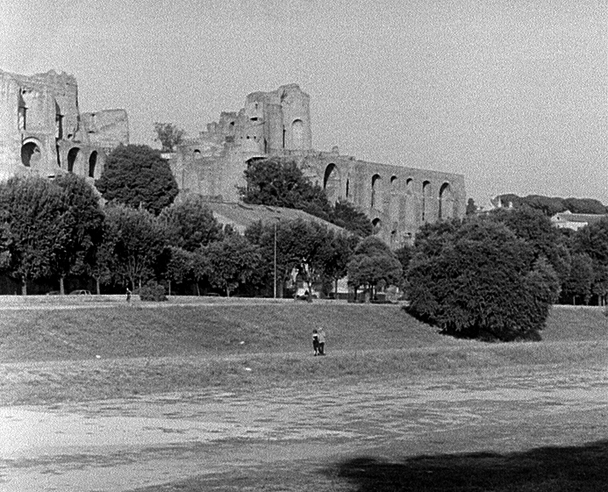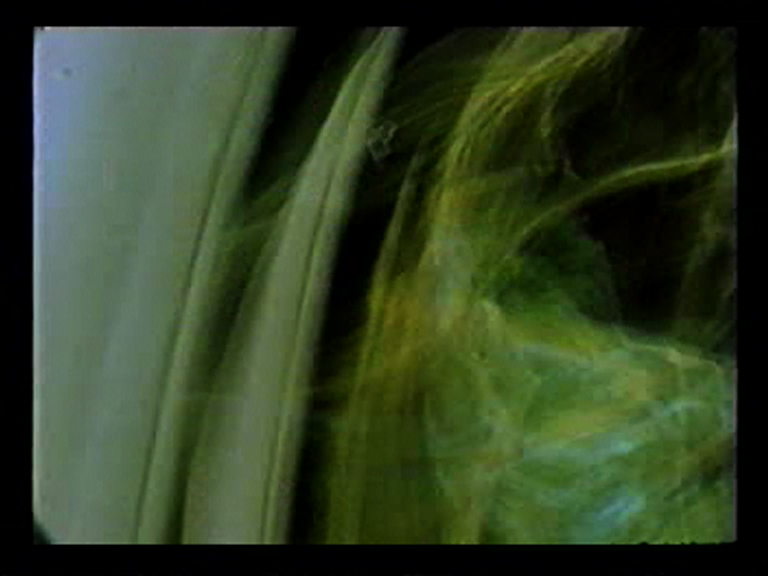For photochemical cinema
While the film industry’s digital turn has taken place, many filmmakers continue to take the less trodden path.

Manifesto
The film industry’s digital turn has taken place, but the world of tomorrow is not what we expected. Many shoots still take place on film, venues persist in showing film prints, and a number of filmmakers — young filmmakers in particular — are drawn to the medium of photochemical film.
Now that it has become the norm, digital technology has lost its glamour: bookstores are popping up everywhere; vinyl has been resurrected. Films are now released simultaneously in theaters and on mobile devices. Meanwhile, like engraving and lithography in the last century, the medium of photochemical film, once used on a large scale by moving-image industries, has become a less trodden path that persists as a means of creative expression.
We are not alone in defending the path less taken. Navire Argo will play a key role in several international networks: the artist-run film labs of filmlabs.org (→), the alternative screening venues in Europe that are part of kino-climates.org (→), as well as the website filmprojection21.org (→), which brings together cinematheques, festivals, cinemas, programmers, archivists, and filmmakers from around the world who work to keep film-based projection alive.
In an industry guided by profit, where one technology stamps out the other, there is an ever-present risk that the creative possibilities and skills related to photochemical film will be lost forever.
Yet who would argue that it is illegitimate to cross the Atlantic on a sailboat simply because New York is but a short flight away from Paris?
Perhaps this is why the image of a ship (navire) came to us… An adventure that began at a time when photochemical film was in its prime now takes a more unusual, but thus all the more vibrant turn.
A group of technician-filmmakers, we have been able to clear out a path on the margins of the industry and its tribulations. We have pieced together a technical infrastructure that we wouldn’t have dared to dream of twenty-five years ago. As the keepers of a technical and artistic know-how, we feel that this imparts an ever-growing responsibility upon us.
Are we dreamers? Perhaps. But sometimes dreamers can have real-world effects. The cinematheque movement was driven by a few obstinate collectors working to save prints of no-longer-profitable silent films from wholesale destruction by the very industry that had produced them.
With the scraps of the film industry and the hidden gestures of its technicians, we have built a modest yet sea-worthy vessel. We have set out towards the future of our medium.
“We have embarked…”
This is why, at this turning point in the history of the moving image, in order to keep the panel of choices available to filmmakers and spectators from being irrevocably diminished, we think that it is crucial for Navire Argo to see the light of day.
“To keep creating with this medium”
From L’Abominable to Navire Argo —
Histoire(s) de cinéma
The artist-run film lab L’Abominable was founded in 1996 in a basement in Asnières (a suburb of Paris) by a handful of enthusiasts eager to make films outside of accepted norms and genres, by hand or with machines, taking advantage of the whole spectrum of photochemical techniques during the development and printing stages of working on film.
Fifteen years later, at the end of 2011, L’Abominable moved into a temporary space thanks to the municipality of La Courneuve (to the north of Paris) — the town’s former central kitchen located under the Joliot-Curie school at the heart of the “4000 Ouest” neighborhood, which is currently undergoing major restructuring.
The years from 2012 to 2017 were marked by an acceleration of the digital changeover..
The history of L’Abominable thus intersected with the history of the film industry, as most of the big labs were closing their doors one after the other: LTC (1936 – 2011), Cinédia (1977 – 2013), Arane-Gulliver (1976 – 2014), the Eclair laboratories (1907 – 2015).
Overnight, men and women with precious knowledge and skills were discarded and made invisible. Overnight, machines that had cost hundreds of thousands of euros were thrown in the trash. Overnight, thousands of 35mm projectors were dismantled, ripped out of theaters, and dumped without a second thought. Overnight, tens of thousands of film prints were irrevocably destroyed, in complete silence.
Meanwhile, in the old central kitchen of La Courneuve:
We, member-filmmakers, employees and volunteers, have recuperated, repaired, and revived a large number of these film machines. We have helped them have a second, different life. We have constructed our lab, our space, our shared workshop. We have built a screening room where locals, spectators, and filmmakers meet.
Thanks to patient and obstinate labor, dozens of films have been and continue to be completed in La Courneuve. Sometimes, these films make their way around the world.
In 2020, the schedule of the demolition and reconstruction of the Joliot-Curie school was announced: in 2022, L’Abominable must leave the exceptional 850 m2 workspace granted to us by the town of La Courneuve almost ten years ago.
“What consoles me is to know that at any moment, somewhere in the world, no matter the hour, when it stops in Tokyo it starts again in New York, in Moscow, in Paris, in Caracas; there is always, as I was saying, that little hum, monotonous but intransigent in its monotony, and this hum is that of a projector projecting a film. Our duty is to make sure this hum never stops.”
Jean-Luc Godard
Some of the nearly 400 films (→)
A handful of films made at L’Abominable over the years, events where they have been shown, awards they have won…
Retour à la rue d’Éole
by Maria Kourkouta, Arte Prize for short film at Oberhausen International Film Festival in 2014
autrement, la Molussie
by Nicolas Rey, Grand Prize at Cinéma du Réel in 2012
Objets trouvés
by Anne-Marie Cornu at Pompidou Center during Monter/Sampler in 2000
Link
by Yves Pélissier at Scratch! Projection in 1999
Un grand bruit
by Guillaume Mazloum at Doclisboa in 2017
Free radicals, une histoire du cinéma expérimental
by Pip Chodorov, theatrically released in 2012
Monica
by Enrico Mandirola at Toronto International Film Festival in 2007
Amnesia
an installation by La Destination at Cinéma Nova in 2000
De un vastísimo mar
a performance by Yoana Urruzola, Stefano Canapa, Josefina Rodriguez & Julien Tarride, in Montevideo, Uruguay in 2007
Charlemagne 2, Piltzer
by Pip Chodorov, International Film-Video prize at Viper in 2002
Kairos
by Elisa Ribes & Stefano Canapa at Rotterdam International Film Festival in 2017
Fleurs noires
Nulle part avant
by Emmanuel Falguières, Jury Spécial Mention at Les Ecrans Documentaires in 2018
Reste-là
by Frédéric Tachou at Cinémathèque Française in 2011
Des spectres hantent l’Europe
by Maria Kourkouta & Niki Giannari, Best World Documentary at Jilhava International Film Festival in 2016
Salaud d’argent (que ma langue s’attache à mon palais)
by Groupe Boris Barnet at FID Marseille 2016
Série des K
Experimental Competition Grand Prize at Côté Court Festival in 2004
No ouestern
by Les Scotcheuses at Douarnenez Film Festival 2017
Le passage du col
by Marie Bottois at FID Marseille 2022
L’œil du cyclope
by Jen Debauche, Jury Prize at Festival des Cinémas Différents et Expérimentaux in Paris in 2015
A lua platz
by Jérémy Gravayat, shows on TV on Arte in 2020
Eléments 1,2 et 3
by Tomaž Burlin, First Prize at Dresdner Schmalfilmtage Festival in 2018
Défilé
by Nathalie Harran at Pellicula et basta !, a lab meeting in Grenoble in 2000
Brûle la mer
by Nathalie Nambot & Maki Berchache at Doc Fortnight, MoMA New-York in 2015
Tahousse
by Mahine Rouhi & Olivier Fouchard, at Rotterdam International Film Festival in 2007
Le Granier, Paysage Étude N°1
by Olivier Fouchard premieres at Festival des Cinémas Différents et Expérimentaux in Paris in 2007
Les champs brûlants
by Catherine Libert & Stefano Canapa, Italiana Doc Jury Prize at Torino International Film Festival in 2010
La caravane suspendue
a new circus show by Frères Kazamarroffs including a film by Gérard Clarté in 2004
Parties visible et invisible d’un ensemble sous tension
by Emmanuel Lefrant at Côté Court Fim Festival in 2010
Folia
by Victor De Las Heras & Anaïs Ibert at L’Alternativa Festival in Barcelona in 2015
Journey through a body
by Camille Degeye, at Critic’s week, Cannes Film Festival in 2019
Agua da vinagre
by Frédérique Menant at 25FPS film festival, Zagreb 2022
My Room, le Grand Canal
by Anne-Sophie Brabant & Pierre Gerbaux, CNC Quality Prize in 2002
PTKHO
by Mahine Rouhi at Media City International Festival in Windsor, Ontario in 2001
On ira à Neuilly inch’Allah
by Anna Salzberg & Mehdi Ahoudig at Les Inattendus in Lyon in 2016
Appunti
by Jean-Baptiste Leroux at FID Marseille it 2013
Dos sueños después
by Pilar Monsell, CNC After Production Prize in 2021
Et nous jetterons la mer derrière vous
Mue(s)
by Frédérique Menant, Jury Prize at Festival des Cinémas Différents et Expérimentaux in Paris in 2015
I.
by Alexandre Larose à S8 Mostra de Cinema Periferico A Coruña, Spain 2022
Les soviets plus l’électricité
FIPRESCI Prize at the Berlinale in 2002
Navigators
by Noah Teichner at Cinéma du Réel 2022
Le jour où j’ai découvert que Jane Fonda était brune
by Anna Salzberg, at Mucem, Women Film Festival Meditteranean Sea, 2022
Les films du dés-apparaître #1 – Mes cheuvs dans ta ********
by Oskar Hache, First Prize at Dresdner Schmalfilmtage Festival in 2019
Borgo
by Lucie Leszez at PRISME#3 Festival – Argentique du futur in 2020
Midnight Orange
by Gautam Valluri at Exis International Film Festival in Seoul in 2019
Cilaos
by Camilo Restrepo, Silver Leopard at Locarno International Film Festival in 2016
Soupirs d’écumes III
by Dominik Lange at Côté Court Festival in 2005
Ile d’Ouessant
by David Dudouit at Toronto International Film Festival in 2018
Los Conductos
by Camilo Restrepo, Best First-feature Length Film at Berlinale in 2020
Istanbul
by Martine Rousset, at Ecrans documentaires in 2008
West Point
by Laurence Rebouillon shows on TV on France 2 in 2008










































































